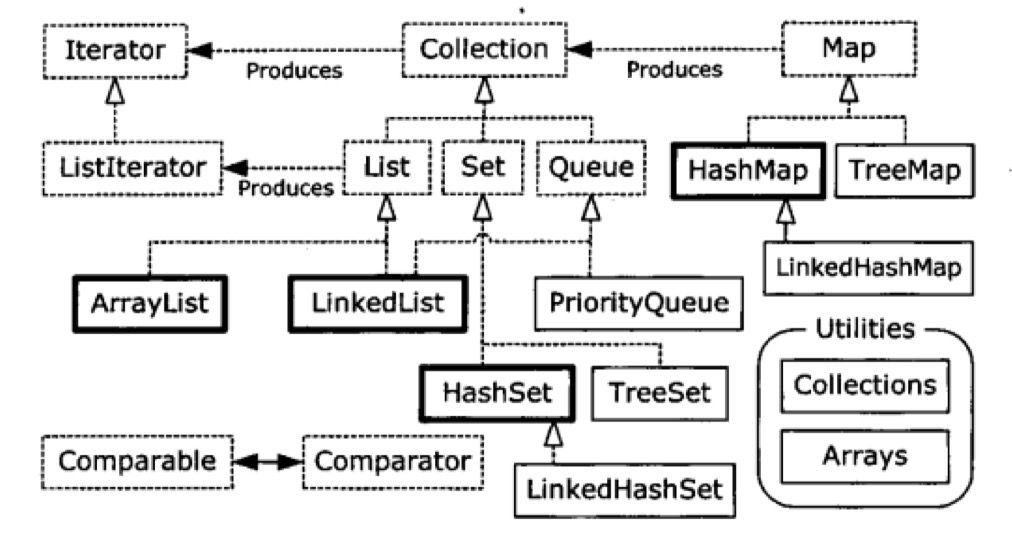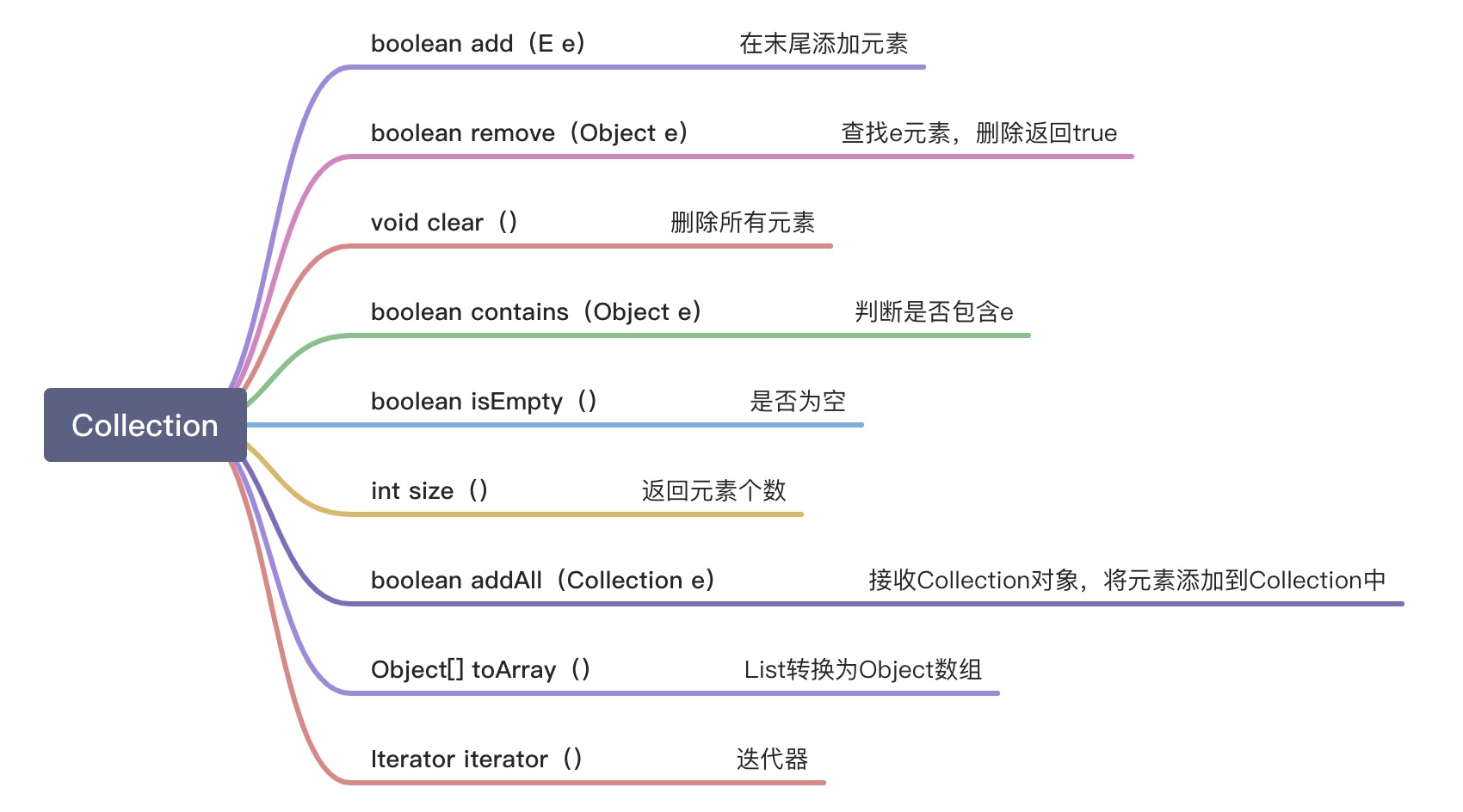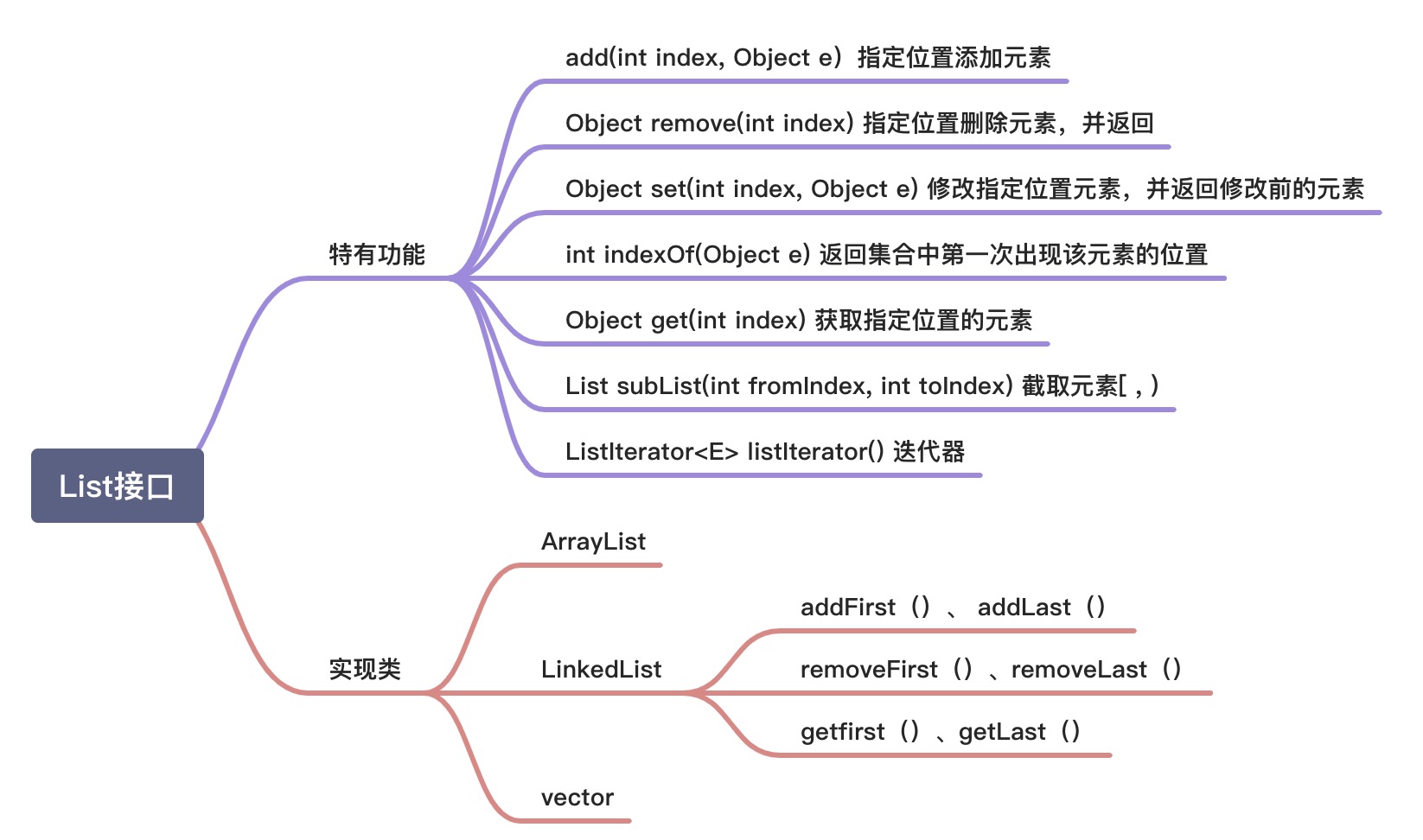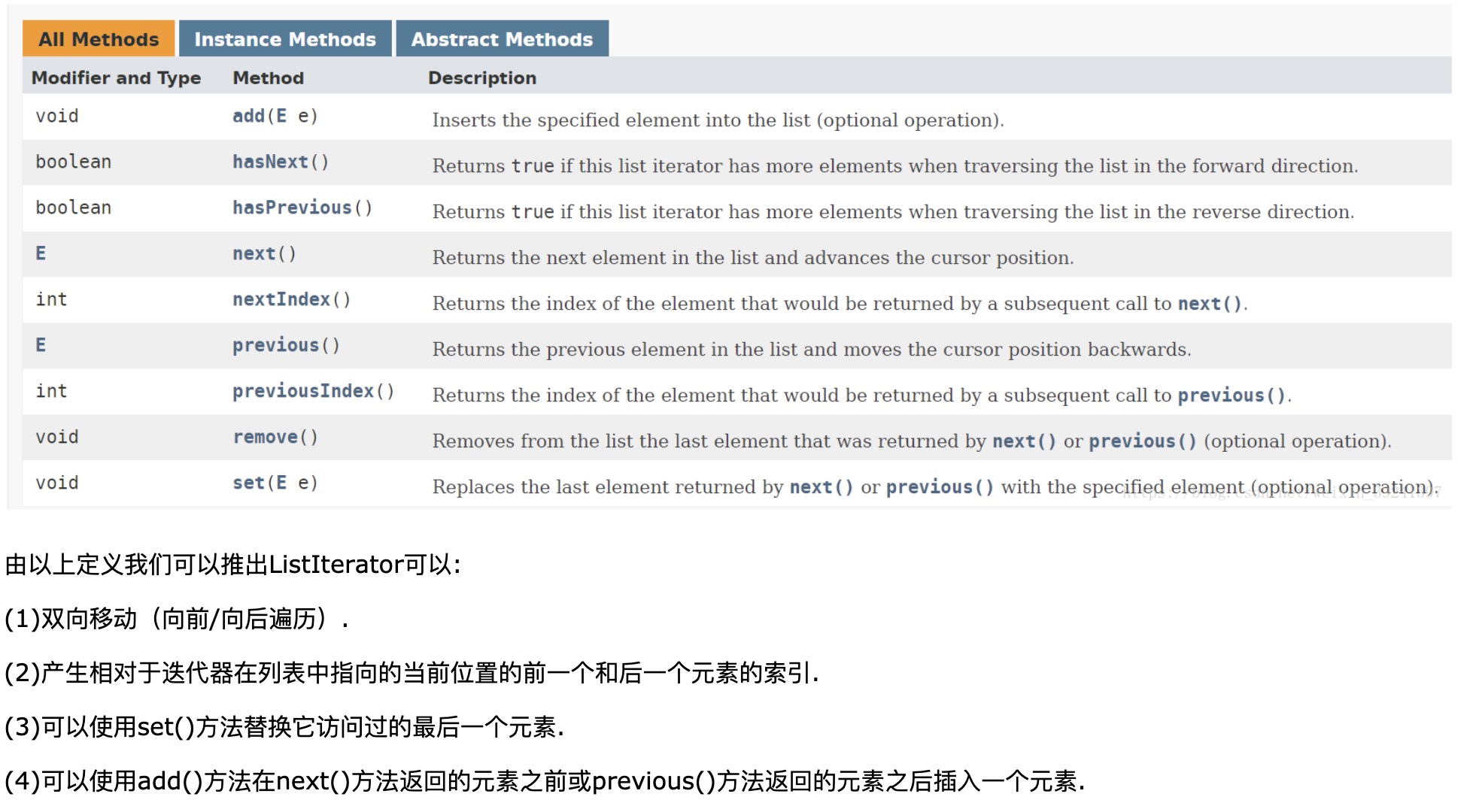11.2 基本概念

Collection接口:
- List接口:
- LinkedList:链表,没有同步,线程不安全
- ArrayList:数组,没有同步,线程不安全
- Vector:数组,同步,线程安全
- Stack:继承Vector,线程安全
- Set接口:不可重复,内部排序
- HashSet:散列函数
- LinkedHashSet:链表维护元素的插入次序
- TreeSet:底层为红黑树,自动升序排序保存
Map接口:
- HashMap:查找最快,无顺序 ,没有同步, 线程不安全
- LinkedHashMap:保留HashMap的速度,按照插入顺序保存
- TreeMap:红黑树,自动升序排序保存
- Hashtable:接口实现类, 同步, 线程安全
11.3 Collection接口方法

11.5 List接口

11.6 迭代器Iterator
Iterator:
- iterator() 返回一个iterator,将准备好返回序列第一个元素
- next() 获得序列下一个元素
- hasNext() 判断序列是否还有元素
- remove()将迭代器返回的元素删除
1 | Iterator<...> it = a.iterator(); |
如果只想遍历List,不想修改,应该用foreach
11.6.1 ListIterator

11.9 Set
Set和List的区别:
- List元素可以重复,Set不能重复
- List可以根据索引操作元素,Set不能
- List按照插入顺序保存,Set不一定
11.10 Map

11.11 Queue
Collection-》Queue-》LinkedList
创建一个队列:Queue<...> queue = new LinkedList<...>()
Queue方法
- 继承自Collection,特殊方法如下:
- boolean offer() 将元素插入队尾,或返回false
- E peek() 返回队头,若队列为空则返回null
- E poll() 删除队头并返回,若队列为空返回null
11.11.1 PriorityQueue
- 自定义优先级比较器,作为优先队列构造器的参数。
- 优先队列继承自Queue,有同样的方法。
1
2
3
4
5
6
7
8
9
10
11
12
13
14
15
16
17
18
19
20
21
22
23
24
25
26
27
28
29
30
31//自定义比较器,降序排列
static Comparator<Integer> cmp = new Comparator<Integer>() {
public int compare(Integer e1, Integer e2) {
return e2 - e1;
}
};
public static void main(String[] args) {
//不用比较器,默认升序排列
Queue<Integer> q = new PriorityQueue<>();
q.add(3);
q.add(2);
q.add(4);
while(!q.isEmpty())
{
System.out.print(q.poll()+" ");
}
/**
* 输出结果
* 2 3 4
*/
//使用自定义比较器,降序排列
Queue<Integer> qq = new PriorityQueue<>(cmp);
qq.add(3);
qq.add(2);
qq.add(4);
while(!qq.isEmpty())
{
System.out.print(qq.poll()+" ");
}
}


